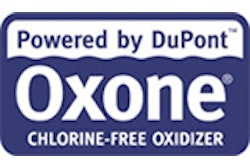
The Department of Energy (DOE) federal mandate regarding pool pump efficiency is set to take effect July 19, 2021. The law takes aim at the home’s second biggest consumer of energy, the pool filter pump. It will apply to almost all pumps associated with a swimming pool, setting efficiency guidelines that can potentially reduce energy consumption by a significant margin.
A DOE committee analysis of the national impact of code adoption has found that the benefits of a national standard far outweigh the burdens placed on pool owners. Their study concludes that the estimated cost of implementation is $149 million per year, while the estimated annual savings is $1.3 billion per year.
The creation of an efficiency standard drove the need for a more detailed form of horsepower measurement. The DOE allowed for industry input in formulating the efficiency requirement and the eventual test parameters that define it. Representatives from the pool industry’s primary manufacturers, including Fluidra, as well as every major motor manufacturer, had seats at the table during these negotiations.
RELATED: The New DOE Pump Regs: Introducing Hydraulic Horsepower
The results included new terms and conventions. Pool pumps will now be graded on two values: Hydraulic horsepower (HHP) and Weighted Energy Factor (WEF). HHP is a function of a pump’s flow and pressure capabilities, while WEF describes the relation between flow and power consumption. If a pump fails to receive a passing WEF score — that is, fails to deliver the appropriate “bang for the buck” — it is disqualified for use, sale or distribution.
(Note: The law doesn’t mandate variable-speed pumps (VSPs); some smaller-sized, single-speed pumps will pass these criteria.)
For VSPs, WEF scores are weighted toward the low-speed range. 80% of the score is calculated at approximately 31 gallons per minute, while only 20% of the score is calculated for the motor operating at 80% capacity. This demonstrates the importance of proper VSP programming in order to achieve energy efficiency. Installing a VSP, setting it to maximum speed and running it for 12 hours per day will do little in achieving the energy conservation goals set forth by this mandate.
WEF is to the pool pump as MPG is to a vehicle. Instead of miles driven per gallon burned, WEF provides a measure of gallons pumped per 1 kWh of energy used. Just like MPG, the higher the score, the greater the energy efficiency. The WEF score is required to be published on all pump data labels on or before July 19, 2021, and all scores may be certified by independent testing laboratories, or NRTLs. This places the burden of compliance directly on the manufacturer. The mandate is based on the date of pump assembly, allowing for all non- compliant pumps produced prior to July 19, 2021, to be sold through to depletion.
RELATED: How to Sell Variable Speed
Variable-speed pumps will soon make up the majority of the pool pump market. Since 2005, moderate to slow market absorption has been spurred on by rebates, incentives and energy use calculations promising to save pool owners money. It has taken 13 years for VSPs to reach about 40% market penetration, with growth having slowed considerably since 2018. The up-front cost of an upgrade has, in some cases, been an insurmountable obstacle, although most VSPs will recover their cost to install before their warranty expires. With the DOE mandate taking effect, it’s likely that the incentives offered by utility companies, subsidized by public funds, will soon cease.
A high WEF score isn’t the only variable installers will have to consider. Check for specific codes and standards that are adopted and enforced in your market. The Model Aquatic Health Code, as an example, dictates that flow rates should be maintained at one turnover every six hours or 36 GPM, whichever is greater. Calculating the pool volume and determining the anticipated head pressure and flow requirements become essential.
For existing pools requiring a pump replacement, the most important factors to consider are the plumbing size and the Suction Outlet Fitting Assembly (SOFA) ratings. Strict adherence to maximum flow velocities is critical in ensuring swimmer safety and equipment reliability. Also, the maximum system flow rate at the maximum pump RPM must never exceed the SOFA system flow rating. Variable-speed pumps offer the ability to set minimum and maximum speeds in order to maintain safe operational flow rates while ensuring proper sanitation and turnover.
RELATED: Weighted Energy Factor (WEF) for Pool Pumps: What You Need To Know
Some specific equipment classes are exempt from the law. Integral sand and cartridge pool filter pumps do not have a performance efficiency mandate but will require timers that automatically shut the pumps down after 10 hours of operation. These systems are typically found on aboveground pools, yet the law doesn’t differentiate based on application. All pumps with maximum pressure generation at or below 30 feet of head are exempt from the rule. These include water feature pumps that operate at or below 1,800 RPM.
Again, the exemption is not due to the application, such as aboveground or water features, but is based on design, physical features and specified performance criteria. 3-phase pumps are not exempt from the rule, but there is no minimum WEF requirement for polyphase self-priming pool filter pumps. However, they still need to be marked with a WEF rating. Polyphase non-self-priming pool filter pumps with HHP less than 2.5 do have a minimum WEF score. Once again, the restriction is not based on application, such as 3-phase commercial; it’s based on equipment classification.
This mandate is set to have a drastic impact on the pool industry. The last forced evolution we’ve experienced due to federal agency regulation led to the extinction of standing pilot, gas-fired pool and spa heaters. Raising the minimum efficiency rating of gas-fired heaters caused some pain in our industry, especially within the heater service ranks. It’s evident, now in hindsight, that the increase to 82% minimum efficiency in heaters was the correct move for the time.
It has been confirmed that an improvement in energy efficiency that is technologically feasible will result in a significant conservation of energy and a reduction of greenhouse gasses. Although the initial knee-jerk reaction is sometimes to resist, these mandates are sensible measures that reduce excess strain on America’s energy infrastructure. Hall of Fame pitcher Nolan Ryan said, “Enjoying success requires the ability to adapt. Only by being open to change will you have a true opportunity to get the most from your talent.”
The pool industry has an opportunity to embrace this change as a challenge. As we always do, let’s once again rise to the occasion, and deliver the pool experience that our customers deserve.
Rocco Russo is national training manager at Fluidra North America, Mooresville, N.C.
This article first appeared in the April 2021 issue of AQUA Magazine — the top resource for retailers, builders and service pros in the pool and spa industry. Subscriptions to the print magazine are free to all industry professionals. Click here to subscribe.











































